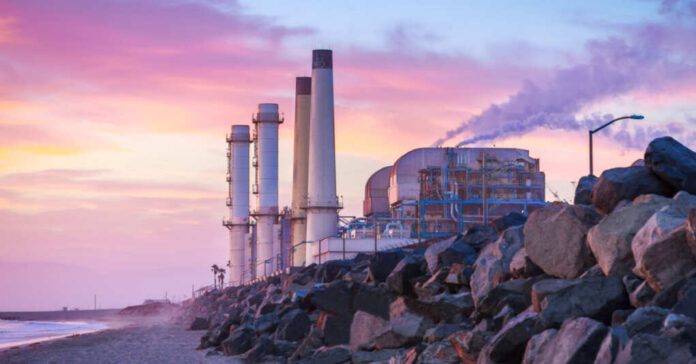
California is known for long, sunny days. In fact, it’s what California progressives depend on for powering their solar energy infrastructure. But when the sun goes down, the state has no choice but to rely on fossil fuel plants. Electricity is at its peak demand around 7 p.m., and that’s when natural gas fills in 45% of the state’s power demand.
Kevin Slagle, a representative from the Staes Petroleum Association, doesn’t see an end to reliance on fossil fuels in California’s immediate future. He states that California will need three times its current production of energy and 30 times more electric vehicles to meet the state’s goals.
But for now, natural gas is a necessity to keep California’s lights on.
Gavin Newsom won’t stop his war on fossil fuels, however, and is continuing his bold and ill-advised plan to reduce oil usage by up to 94%. His “greener California” initiative has, so far, only accounted for 25% of the state’s electricity, with more than half of the power demand still being met by fossil fuels.
July was a hot one in California, and officials made a move to preserve a reliable source of power to meet the demands of extreme weather. The California Energy Commission voted to extend the life of three gas power plants that had been slated for closure, understanding that failing to keep them open would result in the blackouts that California experiences every summer.
Ormond Beach Generating Station, AES Alamitos, and AES Huntington Beach were originally slated for closure at the end of 2023. They will now remain open through 2026 for “emergency use.” The plants were targeted in 2020 because they use ocean water to cool their equipment. California has already shut down plants using similar technology.
California’s power woes are nothing new. In 2022, Newsom delayed the closure of several gas plants to keep up with his state’s energy demands and avoid the potential of blackouts, which would leave an estimated 3.5 million residents in the dark. In 2020, during an August heat wave, California’s power grid proved unable to keep up with demand and rolling blackouts were ordered to manage the deficiency.
In 2022, the Biden administration awarded more than $1 billion to the Diablo Canyon nuclear power plant in California to keep it open. Nuclear power has been touted as a beneficial factor for generating power in climate-friendly ways.
Historically, nuclear power was a reliable source of carbon-free electricity. Since 2013, however, more than a dozen reactors have shut down because they couldn’t keep up with the competition of plants run by natural gas and “renewable energy” plants.
Diablo is the last nuclear power plant in California and was scheduled to close its doors forever in 2025. It applied for funding from the Department of Energy’s $6 billion Civil Nuclear Credit program, which was designed to keep failing nuclear power reactors operational.
The DOE funds were used by the Pacific Gas & Electric (PCG.N) plant to purchase more Uranium and nuclear waste storage casks.
Nuclear power plants present a range of dangers, including the risk of catastrophic accidents, as demonstrated by incidents like Chernobyl and Fukushima. These accidents can lead to the release of harmful radioactive materials into the environment, causing long-lasting health and environmental consequences.
The disposal of nuclear waste is another pressing issue; the highly radioactive byproducts require secure and stable storage for thousands of years to prevent contamination.
The last remaining nuclear plant in California faces many safety issues. Diablo is in San Luis Obispo County, alongside the Pacific Ocean. The region is known to be vulnerable to earthquakes and there is no permanent place to dispose of the radioactive waste generated from the facility. The waste sits in casks on sites at nuclear facilities nationwide.
President Barack Obama stopped the creation of a multi-billion-dollar project that was created to permanently store nuclear waste at an underground facility in Nevada. That means California residents, proponents for safe energy, live alongside a plant that has no permanent solution for its waste products.
Newsom had also boasted earlier this year that California had enough water in its reservoirs from the snow and rain this past winter to revive hydroelectric plants. Apparently, that renewable energy source wasn’t enough, either.
Newsom has had to backtrack on his progressive agenda every year since announcing it. Brendan Cummings, CBD’s conservation director, said in a 2022 interview, “Anytime we set dates for retirement of fossil fuel infrastructure and then say, ‘Hey, we need to keep them open for X number of years longer,’ that’s a sign of our failure of policy.”
Those words must echo in Newsom’s ears as, once again, the governor is forced to admit that his progressive agenda is unable to keep up with his state’s needs.
Activists that think “green energy” is a solution for a state as densely populated as California are just living in the dark.














